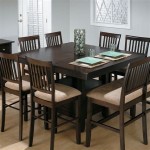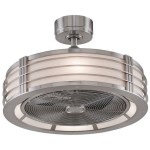Gray Tile: A Versatile Choice for Kitchen Floors
Gray tile has become an increasingly popular choice for kitchen floors due to its versatility, durability, and aesthetic appeal. Its neutral tone provides a sophisticated backdrop that complements a wide range of kitchen styles, from modern minimalist to rustic farmhouse. This article will explore the benefits of selecting gray tile for a kitchen floor, covering various aspects such as material types, design considerations, and practical advantages.
Material Options for Gray Kitchen Floor Tiles
Several materials are commonly used in the production of gray kitchen floor tiles, each offering distinct characteristics in terms of durability, maintenance, and cost. The most prevalent options include ceramic, porcelain, and natural stone.
Ceramic tiles are a popular choice for kitchen floors due to their affordability and ease of maintenance. They are manufactured by firing clay at high temperatures, creating a hard and durable surface. Ceramic tiles are typically glazed, providing a water-resistant and stain-resistant finish. A wide variety of gray shades and patterns are available in ceramic tile, making it easy to find a design that suits various kitchen aesthetics. However, ceramic tiles are generally less dense and durable than porcelain tiles, making them more susceptible to chipping and cracking under heavy impact.
Porcelain tiles offer superior durability and water resistance compared to ceramic tiles. They are made from a finer clay mixture that is fired at higher temperatures, resulting in a denser and less porous material. This makes porcelain tiles resistant to staining, scratching, and moisture absorption, making them ideal for kitchens where spills and heavy foot traffic are common. Porcelain tiles are available in both glazed and unglazed finishes. Unglazed porcelain tiles, also known as through-body porcelain, have color that extends throughout the entire tile, making any chips or scratches less noticeable. While porcelain tiles are generally more expensive than ceramic tiles, their enhanced durability and aesthetic appeal often justify the investment.
Natural stone tiles, such as slate, granite, and limestone, offer a unique and luxurious look for kitchen floors. Each type of stone has its own distinct characteristics in terms of color, texture, and pattern. Slate tiles, for example, typically have a naturally cleft surface and a range of gray tones, providing a rustic and organic feel. Granite tiles are known for their exceptional durability and resistance to staining, making them a practical choice for high-traffic areas. Limestone tiles offer a softer, more muted gray tone and a smooth, honed surface. Natural stone tiles require regular sealing to protect against staining and moisture damage. They are also generally more expensive than ceramic or porcelain tiles, but their natural beauty and durability can significantly enhance the value of a kitchen.
Design Considerations When Choosing Gray Tile
When selecting gray tile for a kitchen floor, several design considerations should be taken into account to ensure a cohesive and visually appealing result. These include the shade of gray, the size and shape of the tiles, and the overall style of the kitchen.
The shade of gray selected for the floor tile can significantly impact the overall feel of the kitchen. Lighter shades of gray can create a bright and airy atmosphere, making the space feel larger and more open. They also tend to reflect more light, which can be beneficial in kitchens with limited natural light. Darker shades of gray, on the other hand, can create a more dramatic and sophisticated look. They can also help to conceal dirt and stains, making them a practical choice for busy kitchens. When choosing a shade of gray, it is important to consider the existing color palette of the kitchen, including the cabinets, countertops, and backsplash. A harmonious color scheme will create a sense of balance and visual appeal. It is also advisable to obtain samples of the tile and view them in the kitchen under different lighting conditions to ensure that the color appears as desired.
The size and shape of the tiles can also influence the overall appearance of the kitchen floor. Larger tiles can create a more seamless and modern look, while smaller tiles can add texture and visual interest. Rectangular tiles can be arranged in various patterns, such as a brick pattern or a herringbone pattern, to create a unique and eye-catching design. Square tiles are a classic choice that complements a wide range of kitchen styles. The size of the kitchen should be considered when choosing the size of the tiles. Larger tiles can make a small kitchen feel even smaller, while smaller tiles can make a large kitchen feel cluttered. A general rule of thumb is to use larger tiles in larger kitchens and smaller tiles in smaller kitchens. The shape of the kitchen should also be considered. For example, long and narrow kitchens may benefit from rectangular tiles that are laid lengthwise to visually elongate the space.
The overall style of the kitchen should be reflected in the choice of gray tile. For a modern minimalist kitchen, sleek and simple gray tiles with a smooth, matte finish may be a good choice. For a rustic farmhouse kitchen, natural stone tiles with a textured surface and a range of gray tones may be a more appropriate choice. For a traditional kitchen, classic square tiles in a medium shade of gray may be a suitable option. It is important to consider the other design elements in the kitchen, such as the cabinets, countertops, and backsplash, to ensure that the tile complements these elements and creates a cohesive overall style. Gray tiles are very versatile and can lend themselves to almost any design style, acting as a neutral backdrop for a bolder cabinet color or backsplash.
Practical Advantages of Gray Kitchen Floor Tiles
In addition to their aesthetic appeal, gray kitchen floor tiles offer several practical advantages that make them a desirable choice for this high-traffic area. These advantages include durability, ease of maintenance, and versatility.
Durability is a key consideration for kitchen floor tiles, as they are subjected to heavy foot traffic, spills, and potential impacts from dropped objects. Gray tiles, especially those made from porcelain or natural stone, are highly durable and resistant to scratching, chipping, and cracking. This makes them a long-lasting and cost-effective flooring solution for kitchens. The durability of gray tiles is particularly important in households with children or pets, where floors are more likely to be subjected to wear and tear. A durable gray tile floor can withstand the rigors of daily use and maintain its appearance for many years. Furthermore, using grout that is specifically designed for durability and stain resistance adds to the longevity of the floor by preventing water damage and the absorption of staining materials.
Ease of maintenance is another important factor to consider when choosing kitchen floor tiles. Gray tiles are generally easy to clean and maintain, requiring only regular sweeping or vacuuming and occasional mopping. The neutral color of gray tiles also helps to conceal dirt and stains, making them a practical choice for busy kitchens. Unlike lighter colored tiles, gray tiles do not show dirt and spills as readily, reducing the need for frequent cleaning. When spills do occur, they can typically be easily cleaned up with a damp cloth or mop. For more stubborn stains, a mild detergent can be used. It is important to avoid using harsh chemicals or abrasive cleaners, as these can damage the surface of the tiles. Regularly sealing natural stone tiles is recommended to protect them from staining and moisture damage.
Versatility is a significant advantage of gray kitchen floor tiles. As a neutral color, gray complements a wide range of kitchen styles and color schemes. Gray tiles can be paired with light or dark cabinets, colorful backsplashes, and various countertop materials. This versatility makes gray tiles a safe and reliable choice for homeowners who want a flooring option that will coordinate with their existing kitchen decor or allow for future design changes. Gray tiles can also be used to create different moods and atmospheres in the kitchen, depending on the shade of gray and the other design elements used. Lighter shades of gray can create a bright and airy feel, while darker shades of gray can create a more dramatic and sophisticated feel. Furthermore, gray tiles can be combined with other colors and patterns to create a unique and personalized kitchen floor design. For example, gray tiles can be paired with white tiles to create a checkerboard pattern, or with colored tiles to create a mosaic design.

Grey Kitchen Tiles Ideas Quorn Stone

32 Grey Kitchen Floor Ideas Xclusive Kitchens

22 Best Grey Tile Floor Kitchen Ideas Flooring

Top 10 Kitchen Floor Tiles Trends 2024 Stone Tile

Kitchen Floor Tiles Tiling

Grey Floor Tiles Porcelain Tile Giant

45 Fantastic Kitchen Floor Ideas And Designs Renoguide N Renovation Inspiration

Ceramic Tile Kitchen Floor Pros Cons And Best Designs Stone

Classic Kitchen Forge Grey Stone Effect Porcelain Tiles Contemporary Hertfordshire By Quorn Houzz

Kitchen Floor Tile Ideas From Leading Supplier Wifi Ceramics








